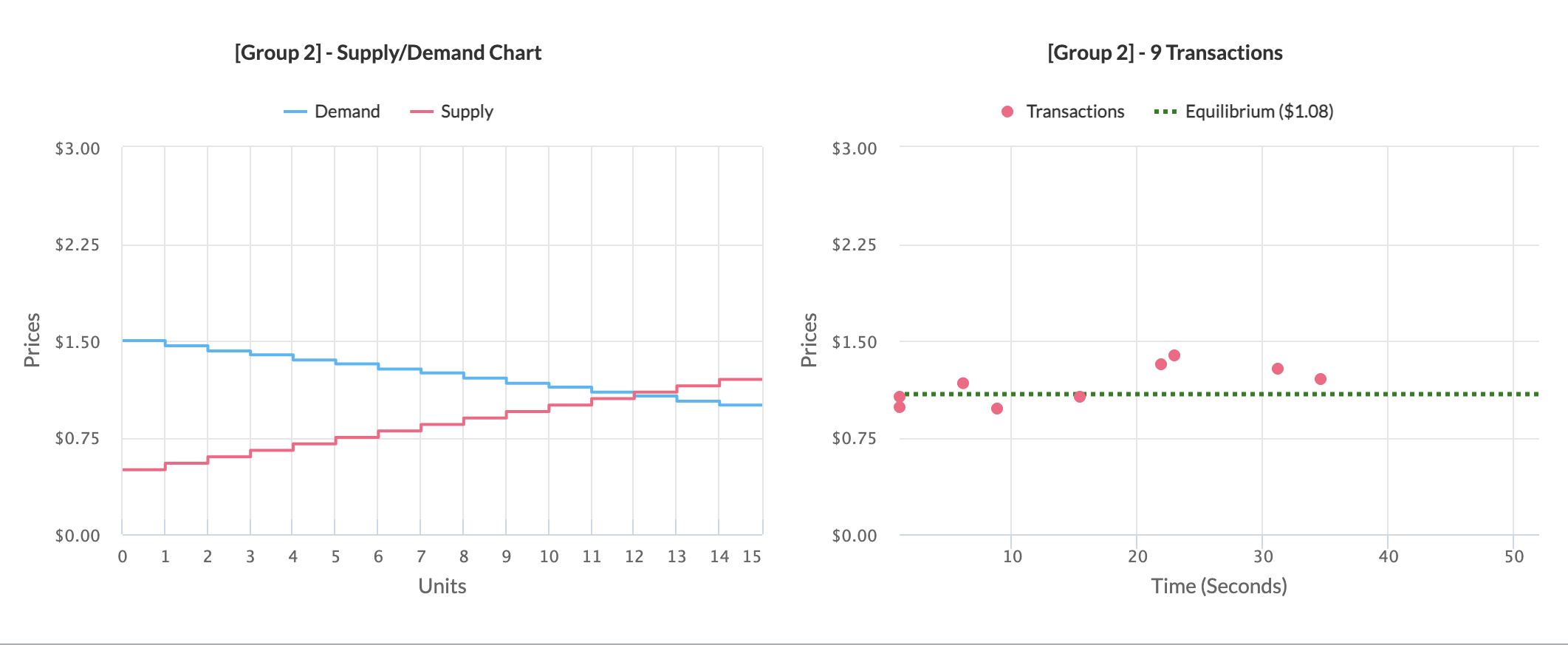The Competitive Market Game is our most commonly played market game, great for teaching Principles of Microeconomics and Intermediate Microeconomics classes. Due to its popularity, the MobLab support team has accumulated a number of questions from instructors about our Competitive Market simulation game. Today, we'd like to share our responses to these commonly asked questions with you.

Want to learn more about bringing market simulation games into the classroom and breaking down results? Please contact our team for more information!
Q: How do students arrive at an equilibrium price?
A mixture of frustration and impatience will move your students' markets towards the equilibrium price. It is not uncommon to see some initial price dispersion. This may well lead to hopeful students giving extreme offers: high bids and low asks. As these offers go unmet, impatient students will begin to moderate their offers. Of course, students will be quicker to revise their offers if they notice recent transaction prices, so you should DEFINITELY make sure that your students know where to find this information!
Q: If there were more oranges per round, would the price have more of a chance to arrive at an equilibrium price?
In short, yes. In our default parameters, each game buyers demand three units, with decreasing marginal valuation, and sellers can provide up to three units at an increasing marginal cost. More oranges per round would increase convergence. As a general rule of practice, we do our best to make our default parameters long enough to convey the concept, but brief enough to leave room for discussion and lecture. We find that after the transaction of three oranges many groups will see prices nearing the equilibrium prediction. Convergence improves with repetition. You can replay the game with students in the same role with the same buyer and seller values by changing the number of periods in the Repetition panel.Q: What should I set the group size to? Should I increase the group size so students have more bids and asks to choose from?
We find that 10 players per group (5 sellers, 5 buyers) keeps the game moving at a comfortable pace for students and generates strong data results. No matter the group size, students will only be shown the three highest bids and the three lowest asks in the table. However, with more players in the game, whether human or robot, bids and asks will change more frequently and the graph will be more populated with transactions. I would advise against group sizes over 20 since beyond that point the game will be moving at a pace that might be hard for students to keep up with.Q: How do the robots play?
Robot Buyer: If there are asks and the best ask is less than 90% of the robot’s current value, then the robot will buy at the lowest ask. If there are no asks, the robot will make a bid with a price at 90% of its current value. Robot Seller: If there are bids and the best bid asks for 110% of the robot’s current value, then the robot will sell at the highest bid. If there are no bids, then the seller will ask for 110% of its current value.Q: Can I monitor the market and see the transactions that are occurring from my instructor account?
We envisioned the role of the instructor to be able to press run game in the console, see that all the groups have begun, and then step away from your computer and move throughout to classroom to answer any questions students may have while playing. However, we do understand that some educators like to become a student in their classroom during game play—thus we have 6 test accounts, where you can log in and play with your students. The choice is entirely up to you!Want to learn more about bringing market simulation games into the classroom and breaking down results? Please contact our team for more information!

